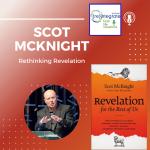
In a recent post I discussed Why Organizational Culture Matters. In that post, I engaged the questions…
* What Is Organizational Culture? And,
* Why Does Organizational Culture Matter?
Based on answers to these questions I concluded that leaders must focus on both smart strategy AND healthy culture in their leadership work.
The Emotional Side of Organizational Culture
Providing an expanded and clarifying conversation on organizational culture, Barsade and O’Neill argue that while emotions are a vital part of the organizational culture this dimension that is often overlooked.
In their HBR article on the topic, they note that, “most leaders focus on how employees think and behave—but feelings matter just as much.”
Barsade and O’Neill provide additional clarity on this point:
“Cognitive culture is undeniably important to an organization’s success. But it’s only part of the story. The other critical part is what we call the group’s emotional culture: the shared affective values, norms, artifacts, and assumptions that govern which emotions people have and express at work and which ones they are better off suppressing.”
Why Is Attention to Emotional Culture Important?
In their article, they note that attending to the emotional culture of an organization involves looking at what motivates employees and learning that which makes organizational members feel excited about their work and feel that the belong to the organization and its mission.
For better or worse, emotions play an important part in the overall organizational culture. The article highlights that positive emotional culture is not just a good idea, but that emotions impact important employee metrics such as retention, work quality, and employee commitment. In short, “you can see the effects [of emotions] on the bottom line.”
What Can Leaders Do about It?
If emotional culture is important, what can leaders and managers do to help positively shape the emotional culture of their organization?
Get a Handle on the Current Emotional Culture
Barsade and O’Neill argue that it begins with simply getting a handle on the existing emotional culture. Whether through employee surveys, employee engagement apps, or other creative means of gathering relevant data, the starting place is understanding the current emotional culture. In such surveys, it may begin with capture basic emotions such as joy, love, anger, fear, and sadness.
Proactively Create and Shape an Emotional Culture
Once the current emotional culture is identified, it’s time to start thinking about how leaders and managers may take the next steps of creating and shaping a healthy emotional culture in the organization.
Barsade and O’Neill present three key steps in this process:
- “Harness what people already feel”
- “Model the emotions you want to cultivate”
- “Get people to fake it till they feel it”
I will stop here at this point. However, more can be noted about these so I will continue to unpack each of these in the coming post in this series next week.
For now, consider a few questions:
- Are you considering the emotional culture of your organization, or are you, as Barsade and O’Neill suggest is the case with many people, only focusing on the cognitive and behavioral dimensions of organizational culture?
- What steps can you take to gain perspective on the current state of your organization (or team’s) emotional culture?
- What steps can you take to positively shape the culture of your team or organization in future days?
I’ll pick up more with emotional culture next week.












